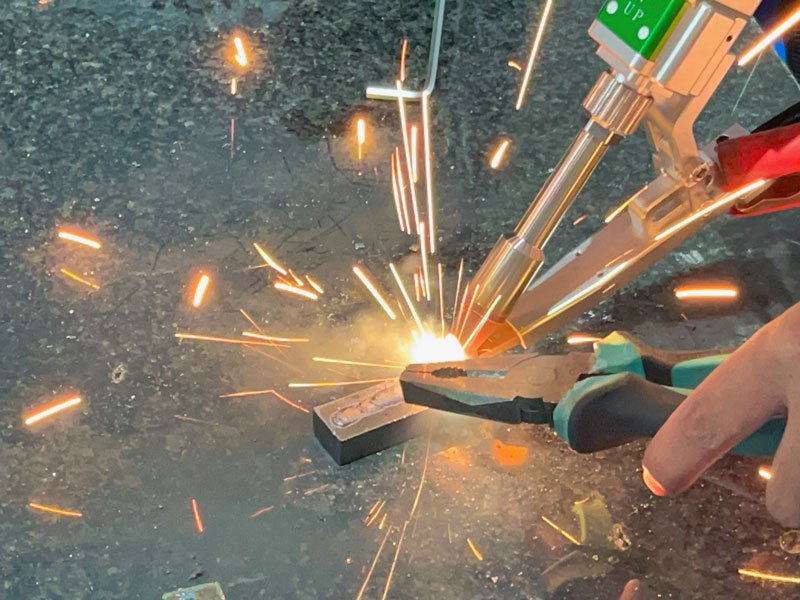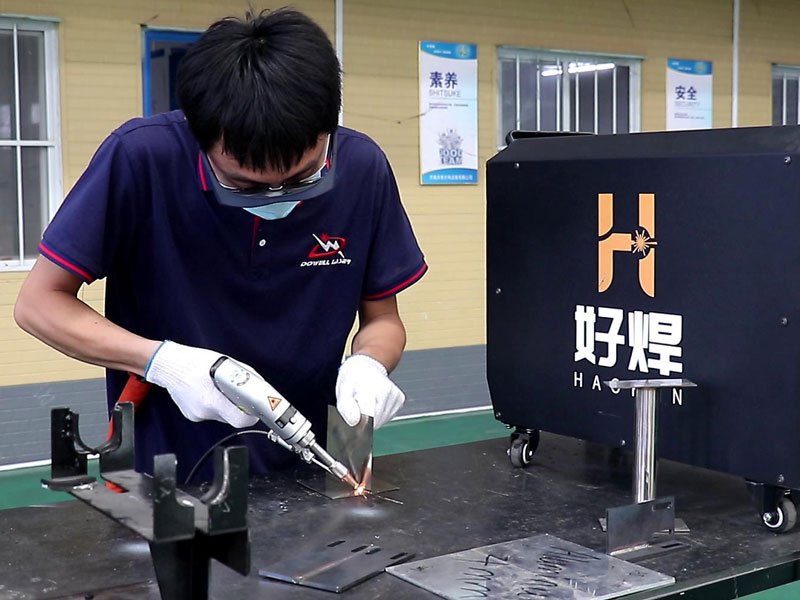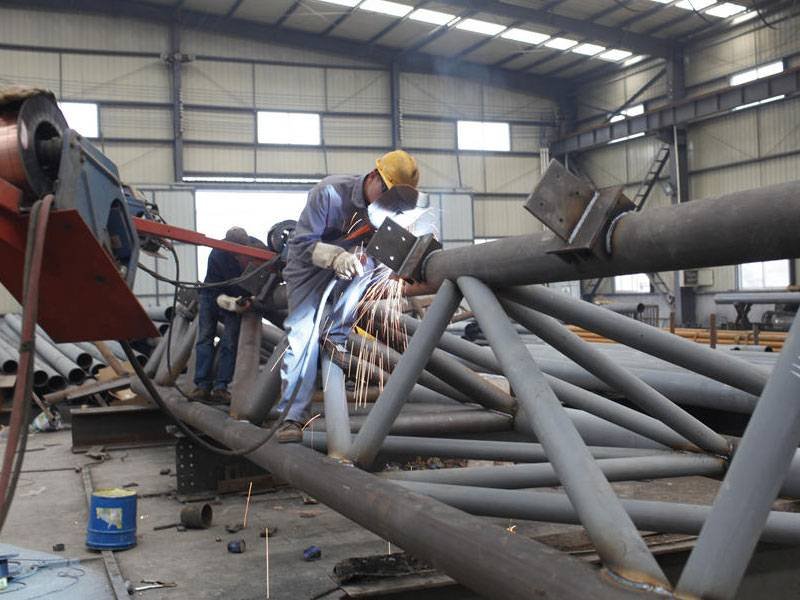In the world of metal fabrication, laser welding VS TIG welding. These represent the fusion of science, precision and art that shapes the foundation of modern manufacturing.
Whether you are a seasoned professional or an avid enthusiast, this complete guide will demystify these welds and reveal the unique characteristics, applications and processes that make them unique. Join us on a journey of discovery where precision meets power and innovation never ends.

What is Laser Welding
Laser beam welding is an advanced joining process that utilizes a high-power laser beam to form strong and accurate welds. In this, the laser beam is concentrated on the workpiece so that it melts and binds metals together. This technique has many benefits over conventional welding processes such as quicker speeds, precision and management.
What is TIG Welding
Tungsten Inert Gas (TIG) welding is another popular technique used in metal fabrication. It involves using a non-consumable tungsten electrode to create an arc between the electrode and the workpiece. A shielding gas is then used to protect the weld area from atmospheric contamination.
Advantages of laser welding
Welding with minimal heat input.
This reduces distortion and shrinks the heat-affected zone, making it ideal for applications where accuracy is critical. Handheld laser welding process can be performed on a variety of materials, including stainless steel, aluminum, titanium, and even dissimilar metals.
High welding speed.
The concentrated energy of the laser beam heats and cools the workpiece quickly, resulting in shorter production times than other methods. This makes laser welding particularly suitable for high-volume manufacturing processes.

Advantages of laser welding
- Precisión: Laser welding makes it possible to control the weld, which brings about correct and consistent outcomes.
- Less amount of heat: The small area affected by the laser beam minimizes distortion and also keeps the properties of the original material.
- Speedy welding: The laser beam is capable of heating and cooling rapidly due to its high energy density thus enabling quick production rates.
- Versatilidad: Dissimilar metals are also a suitable application for laser welding.
- Absence of filler metal needed: Even though additional materials might be inserted into laser welded joints at times, they can still be very strong without them.
- Aesthetics; On many occasions, laser welds have an attractive appearance characterized by little or no spatter and clean seam lines
- Automatability possibility: Efficiency in manufacturing processes as well as low labor intensity can be enhanced through integrating this type of process into automated assembly lines.
Difference Between Fiber Laser Welding And TIG Welding
Both laser welding and TIG welding are good for joining but have many differences.
LASER WELDING
Laser welding involves concentrating light energy to produce heat on the solder. However, in TIG welding, an electric arc is formed between a tungsten electrode and the workpiece thereby producing heat.
Speed Of Welding
Laser welding has high energy density as well as fast heating abilities hence it is often faster than TIG welding. For this reason it is used largely in high volume fabricación situations where speed of operation is crucial.
Tolerance Levels
Moreover, the increase in accuracy can be dependent on various technologies used by different individuals including laser welding, TIG among others. Comparatively speaking, laser beam welding generally has a smaller heat affected zone and less distortion than Tig process hence being more accurate.
Precision and Efficiency in Laser Welding
Laser welding is a famous method of working which makes it very precise. The targeted laser beam used in the process provides pinpoint accuracy, an ideal characteristic for intricate work or close fits. This precision eliminates drilling or other operations done after welding resulting in production cost and time savings.
Besides, laser welding is efficient because of its high heating and cooling rates. It is quick to fuse the wok piece by energy focused by the laser beam than when using old methods that make the cycle times shorter too. Consequently, this efficiency results in increased productivity and lower manufacturing costs.
Versatility and Control in TIG Welding
Many applications favor TIG welding because of its versatility and control. Precise control over the arc is achieved in TIG welding by using non-consumable tungsten electrode, hence producing clean and aesthetically pleasing welds. This level of control is particularly good for working with thin materials or complex joint designs.
TIG welding can be used on different materials like stainless steel, carbon steel, aluminum, copper alloys among others. It can be used across many industries such as automobile, aerospace, building construction and art because it is versatile.

Applications Across Industries: Laser Welding
Laser welding finds extensive applications across various industries due to its unique advantages. Here are some notable examples:
- Automotor: Laser welding is widely used in the automotive industry for joining components such as body panels, exhaust systems, fuel tanks, and battery packs. Its high precision and speed make it ideal for mass production lines.
- Aeroespacial: Laser welding plays a crucial role in aerospace manufacturing for applications like turbine blades, aircraft structures, engine components, and fuel systems. The ability to weld dissimilar metals is particularly valuable in this industry.
- Electrónica: The electronics industry utilizes laser welding for delicate soldering tasks on circuit boards and microelectronic components. The precise heat control ensures minimal damage to sensitive electronic parts.
- Medical devices: Laser welding is commonly employed in the production of medical devices such as surgical instruments, implants, catheters, and pacemakers. Its ability to create small welds with minimal heat input is critical for maintaining the integrity of delicate medical equipment.
Applications Across Industries: TIG Welding
TIG welding also finds widespread applications across various industries. Here are a few examples:
- Artistry and jewelry making: TIG welding is highly valued in the artistry and jewelry industry for its ability to create intricate welds with excellent control. It allows artists to join precious metals and create unique designs.
- Pipe fabrication: TIG welding is commonly used in pipe fabrication for joining pipes made of stainless steel, carbon steel, or other alloys. The precise control over heat input ensures strong and leak-free welds.
- Food and beverage industry: TIG welding is employed in the food and beverage industry for fabricating stainless steel tanks, pipelines, and other equipment that require hygienic welds.
- Repair work: TIG welding is often used for repair work due to its ability to produce high-quality welds with minimal distortion. It allows for precise heat control, making it suitable for fixing damaged or worn-out parts.
Cost Considerations: Laser vs TIG Welding Techniques
The cost difference between laser welding and TIG welding will depend on factors such as the initial investment, operating costs, production volume, and the project requirements involved. Due to the advanced technology used in welding with lasers, their prices are usually higher compared to TIG machines.
Reduced labor costs, increased productivity, and reduced material waste have made laser welding an inexpensive process that can be adopted. It is fast enough and has the potential for automation; it is best suited for high yields where efficiency is critical
TIG welding may be more suitable for small-scale operations or projects that require a high level of control and precision because of their lower equipment costs. It may also be preferred where appearance or aesthetics are paramount.

Preguntas más frecuentes
How Does an IPG LightWELD Laser Welder Compare to Traditional MIG or TIG Welding?
IPG LightWELD laser welder offers enhanced efficiency, precision, and versatility compared to traditional MIG or TIG welding techniques. Its advanced technology makes it a valuable asset in various industries where speed, accuracy, and aesthetics are paramount.
Laser Weld Strength vs TIG
The intensity of laser welding can vary compared to TIG ( tungsten inert gas ) welding, depending on a number of factors including the welding material, welding parameters and weld quality.
Advancements in TIG vs Laser Welding Technologies
The field of laser welding and TIG welding continues to evolve with advancements in technology. Here are some notable developments:
- Soldadura por láser: Recent advancements in laser welding technology have focused on improving process control, increasing power output, and enhancing automation capabilities. This has led to faster welding speeds, improved weld quality, and greater efficiency.
- Soldadura TIG: TIG welding has seen advancements in power sources, electrode materials, and shielding gases. These developments have resulted in better arc stability, reduced tungsten contamination, and improved weld penetration.
Laser Welding vs TIG Welding: Which One is Better?
The answer to the question of whether laser welding or TIG welding is better depends on what a particular project or application requires. Both technologies have their own advantages and are relevant in different conditions.
Although, where speed, accuracy and automation count as well. It is ideal for high-volume production environments that require efficiency. Laser welding also allows for a breadth of material compatibility and eliminates resultant distortion in welds.
TIG welding might be the best option if heat input control and appearance are paramount concerns. It controls the arc with great precision ensuring exceptional looking welds are achieved. It is particularly useful when working with more detailed work pieces or thinner materials.
